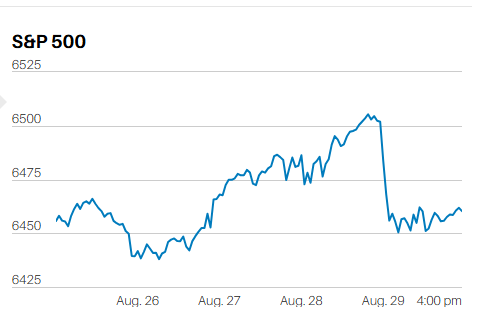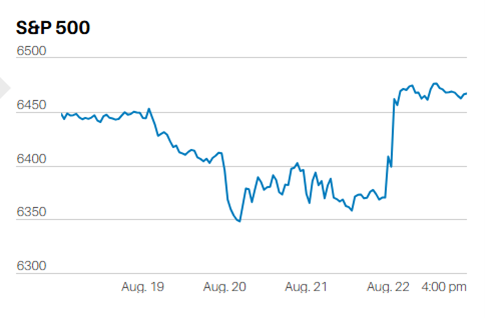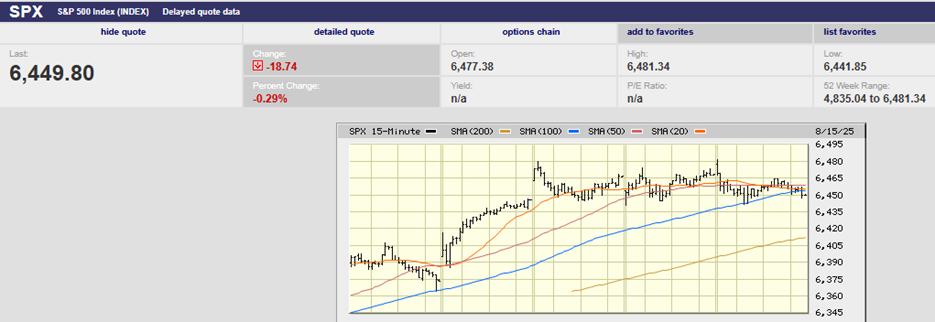Bonds as a tactical allocation

Market Update
The S&P 500 was down 19.6% from its record high by Thursday morning. It recovered some of its losses later that day. It surged higher in a bear market rally on Friday. The Index finished the week down 2.4% to close at 4023.89. The Nasdaq lost 2.8% and continues to underperform the broader market. The Thursday S&P low of 3858.87 will likely be tested in the coming weeks.
Thursday’s low took the S&P to the bottom of the descending trading channel. A bounce from 3858 wasn’t surprising at all in other words. The short-term trend is down despite the bounce. The old trading range beckons. The market needs to regain it soon or more selling will materialize. What is currently a correction will turn into a bear market as the algorithms kick into the downside.
Resistance between 4100 and 4200 should prove tough to overcome. The most likely near-term path will be a bounce to resistance and then failure. A retest of the 3858.87 low will follow. Technical analysis is about understanding patterns in the market created by human behavior. Investors repeatedly make the same decisions based on fear and greed. Bear market rallies are fueled by both emotions. Bargain hunters start to buy causing short sellers to cover. A short sharp bounce ensues. Sellers wait above the market to unload stocks they didn’t sell during the initial decline. Resistance is investors waiting to sell a bounce. They are the ones who didn’t get out at higher prices and now regret that they didn’t. A bounce gives them a second chance to lighten up on stocks. The selling grows as the market climbs higher. It overwhelms the buying eventually and down we go again. Rinse and repeat.
Of course, fundamentals drive the market longer term. The economy is slowing. Earnings growth is slowing as well. Consensus S&P earnings estimates are for $227.50 for 2022 rising to $250.53 in 2023. Earnings growth is expected to be 9.1% in 2022 accelerating to 10.1% in 2023. Earnings estimates are almost certainly too high. It is unlikely that earnings growth will be higher in 2023 than 2022. The Federal Reserve is raising interest rates to slow the economy down after all.
There is room for earnings to disappoint investors over the next two to four quarters. Earnings disappointments will lead to more downside pressure on stocks. A recession in 2022 is unlikely. A recession in late 2023 or early 2024 more likely. A bear market this year is increasingly likely if for no other reason than how far the S&P has already fallen.
Norwood Economics is still buying good companies on sale. Bear markets are a wonderful buying opportunity if you have cash.
Economic Indicators
Inflation is on everyone’s minds. Consumer 1-year inflation expectations fell to 6.3% in April from 6.6% the month prior. Consumer 3-year inflation expectations rose to 3.9% in April from 3.7% in March. The NFIB small-business index shows that small business owners see inflation as their number one problem. The Federal Reserve needs to regain credibility and knows it. Expect more tough talk from the Fed. Expect the Fed funds rate to be at 3% within a year. The good news is that the 10-year Treasury tends to rise to the expected Fed fund rate and then peak. The 10-year Treasury yield may be about done rising. Good news for mortgage rates and good news for bond investors if true.
The Core CPI rose 0.6% in April month over month. It rose 6.2% year over year. CPI including food and energy rose 8.3% year over year. The Federal Reserve uses the Personal Consumption Expenditure (PCE) index as its main inflation gauge. PCE is reported on 27 May. Citi economist Veronica Clark estimates that core PCE rose 0.3% in April from March, according to Barron’s. She sees core PCE rising 4.8% from a year earlier. Goldman Sachs estimates 0.2% month over month and 4.7% from a year earlier. Investors will be watching anxiously for the actual numbers on 27 May. Worse than expected could lead to heavy selling. Better than expected may key another bear market rally.
Bonds are Starting to Look More Interesting
We have written frequently that bonds are not a safe investment. We’ve written it repeatedly since March of 2020 when the entire yield curve fell below 1%. We’ve told investors over the last few years that “a lot of people will lose a lot of money in bonds over the next decade or two”. Bonds are down big this year. It is probably that bonds will be a safe long-term investment again someday. It likely won’t be for years though. For now, bonds are likely to be more of a tactical allocation. An investment that is held for one to two year periods when recessions are approaching.
We sold heavily in March of 2020 when the yield curve fell below 1%, something that had never happened before. We are still underweight bonds, both with our wealth management clients and in our 401(k) pre-built portfolios. The 10-year Treasury has gone from 0.5% to 3.2% at its peak. It is currently yielding 2.93%. The U.S. economy can’t handle much higher interest rates. The debt load is too high at $29 trillion. Bond yields will start falling in the next few quarters leading to price gains.
High Yield bond spreads are widening rapidly. The CCC’s now stand at 10% over equivalent Treasuries, according to Barron’s. The yield spread over Treasuries can move wider still, especially in a recession. The Federal Reserve is very sensitive to disruptions in the credit markets. Sharply rising spreads are a leading indicator of recession and something to keep an eye on. Disruptions in the credit markets will stay the Fed’s hand. Severe disruptions will cause them to ease regardless of the inflation consequences.
But back to bonds in general. For the first time in two years, it makes sense to move to a normal weight for short-term bonds. Soon it may be time to increase intermediate and long-term bond allocations to normal as well. However, Norwood Economics will wait to see if quantitative tightening (QT) causes one more leg up in yields. The Fed is just getting started with it. The impact of QT is uncertain in both its timing and size. That the impact will be negative is a given.
Regards,
Christopher R Norwood, CFA
Chief Market Strategist











